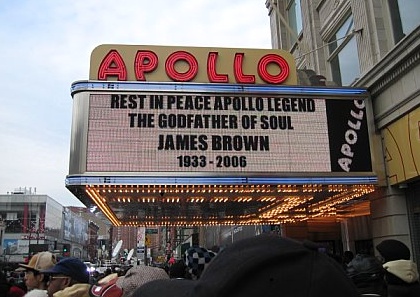
By Ugonma Ubani-Ebere
A bright marquee bears the name Apollo on the busy W. 125th St. in Harlem. Residents walk by the historic building, while tourists take pictures of the Apollo Walk of Fame, and take selfies with the theatre as its background. The Apollo Theatre opened in 1913, making it 106 years old. Inside, a large crystal chandelier and lush red carpet welcome in the guest. Famous black entertainers are etched on the wall, while Motown hits play softly in the background. A replica of the famous tree stump that performers rub for good luck sits temptingly in front of the entrance into the main theatre, waiting for foreign hands to feel its magic. Tourists are in awe when they realize that they are standing in the same place where some of the many artists such as Gladys Knight, Marvin Gaye, and The Jackson 5 started their careers. It is an experience such as this that brings many people to the Apollo Theatre annually.
The Apollo Theatre has gone through many changes since its initial opening. From segregation, briefly closing in 1976, and numerous changes in ownership, the theatre is still a strong figure in the Harlem community. Over the years, gentrification has completely transformed Harlem. Expensive stores infiltrate every corner, and a new demographic of white residents roam the streets. Some residents that have lived in Harlem for years are not fond of the new changes. Some feel that the true essence and history of Harlem has been lost due to gentrification, which in turn has affected the authenticity of the Apollo. However, other residents are grateful for the changes that gentrification has brought to Harlem and the Apollo. They feel that Harlem has become a better and safer place to live in, and are welcome to the future of Harlem. Despite the negative or positive changes one perceives in Harlem, many can agree that the Apollo has stood the test of time in Harlem, and will continue to do so for many years to come.